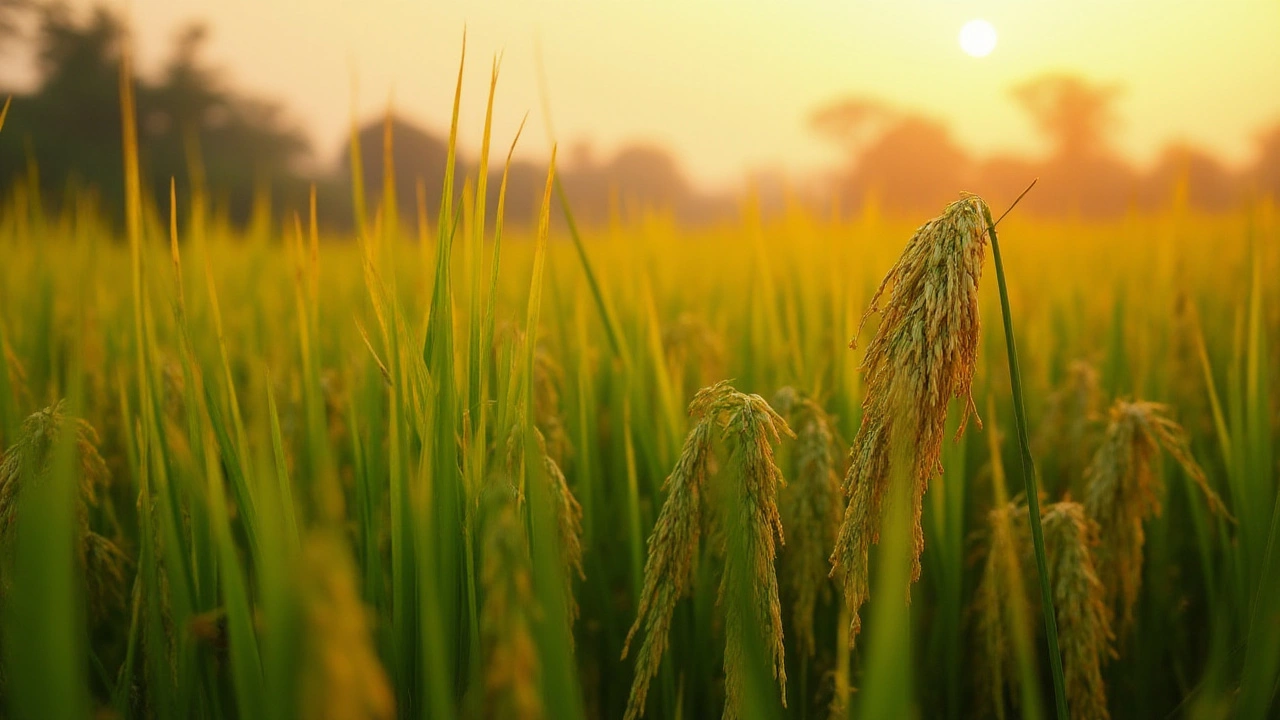Rice Grains Per Plant: What You Need to Know
If you’ve ever wondered how many rice grains come from one plant, you’re not alone. Most Indian growers see anywhere from 100 to 200 grains on a healthy plant, but the exact number depends on a handful of key factors. Knowing these factors lets you tweak your practice and squeeze more grains out of every seed you plant.
What Determines Grain Count?
First off, variety matters. Traditional indica types often give 120‑150 grains per panicle, while some high‑yield hybrids can push past 200. Genetics set the ceiling, but the field conditions determine whether you hit it.
Spacing is the next big player. Planting seedlings too close forces each plant to compete for sunlight, water, and nutrients, shrinking the panicle size. A spacing of about 20 cm between rows and 15 cm between plants works well for most Indian soils.
Soil health also shapes grain numbers. Rice loves loamy, well‑drained soils with a pH of 5.5‑6.5. If the soil is too compact or lacks organic matter, root growth stalls and grain formation suffers. A simple soil test can tell you if you need lime or compost.
Water management cannot be ignored. While rice loves standing water, too much or too little at critical stages—especially during panicle initiation—can slash grain count. Using drip irrigation or controlled flooding lets you keep water at the right level without drowning the seedlings.
Finally, pests and disease are silent grain thieves. Stem borer attacks and blast disease directly damage the panicle, reducing the number of viable grains. Regular scouting and timely organic sprays keep the threats in check.
Practical Ways to Increase Grains per Plant
Start with a high‑yield variety that’s suited to your climate. Hybrid seeds may cost a bit more, but the extra 30‑50 grains per plant often pay off quickly.
Prepare the seedbed with well‑rotted compost. Adding 2‑3 kg of organic matter per square meter improves soil structure and supplies the nitrogen that rice loves during the vegetative phase.
Adopt a proper planting layout. Use a simple grid method: mark rows with a rope, then space seedlings evenly. This simple step reduces competition and lets each plant grow fully.
Control water with a shallow flood during early growth, then switch to a controlled depth (5‑10 cm) once the tillering stage begins. Avoid deep flooding during flowering; a modest water level helps the panicle fill properly.
Apply nitrogen in split doses: a 30 % boost at transplanting, another 40 % at tillering, and the remaining 30 % before panicle initiation. This staged feeding matches the plant’s nutrient demand and encourages more grain formation.
Keep a watchful eye for pests. If you spot stem borer tunnels, dip the affected stems in a neem‑oil solution. For blast, spray a copper‑based fungicide early, before the lesions spread.
Harvest at the right time. Waiting until the grains turn golden and the plant starts to dry ensures maximum grain weight and reduces breakage.
By paying attention to these basics—variety, spacing, soil, water, and pest control—you can reliably push the grain count from the average 130 to well over 180 per plant. That extra boost adds up fast when you’re managing a whole field.
So next time you walk through your paddy, remember that each stalk holds a potential gold mine. With the right steps, you’ll turn that potential into real, tasty rice on your table.
How Many Rice Grains from One Plant: Surprising Yield Facts You Need to Know
Ever wondered how many rice grains grow on a single plant? Discover fascinating yield numbers, plant growth facts, and practical tips for maximizing your rice harvest.
About
Rice Cultivation
Latest Posts


How Deep to Plant Rice: Best Depths, Mistakes, and Expert Tips
By Alden Thorne Jul 11, 2025

What is India's National Flower? Exploring the Lotus in Everyday Life
By Alden Thorne May 17, 2025

Eco Friendly Garden: How to Start One Step-by-Step
By Alden Thorne May 31, 2025

